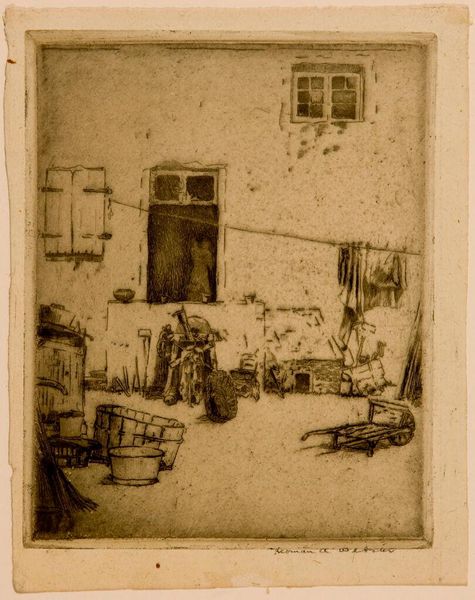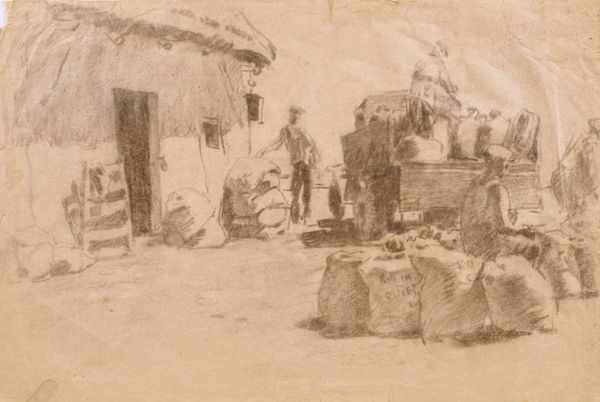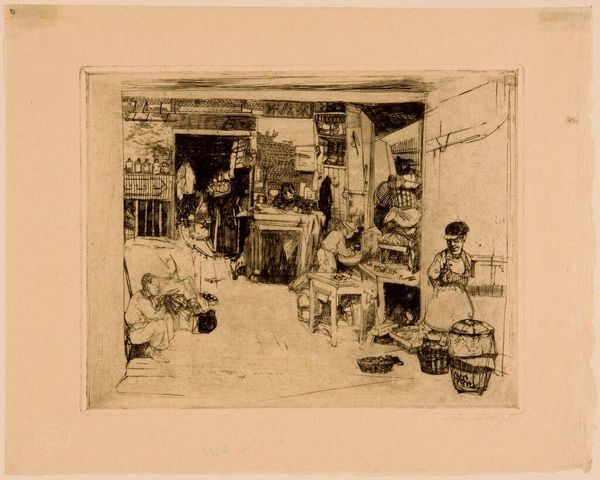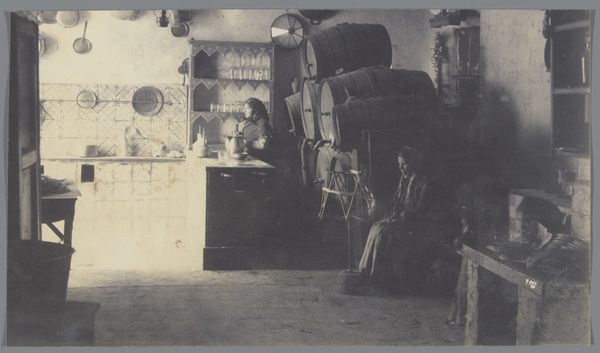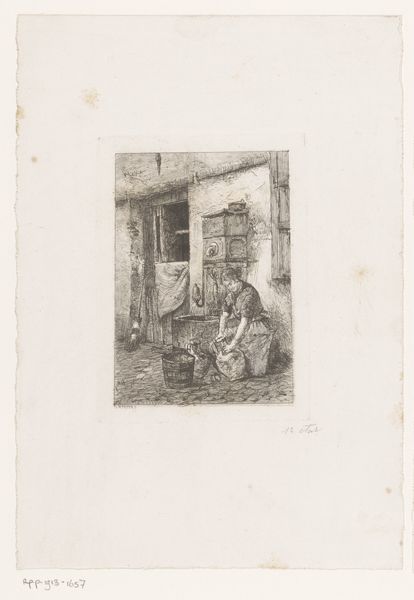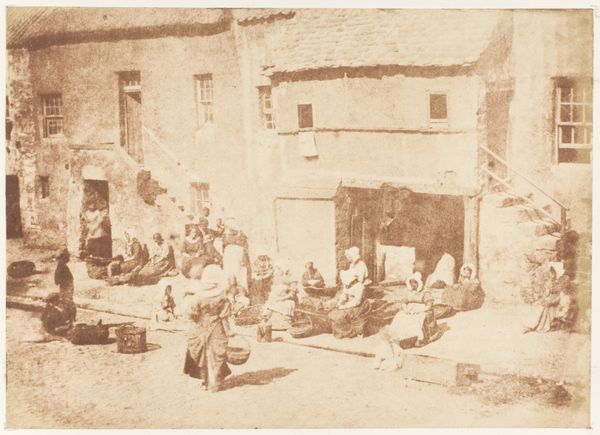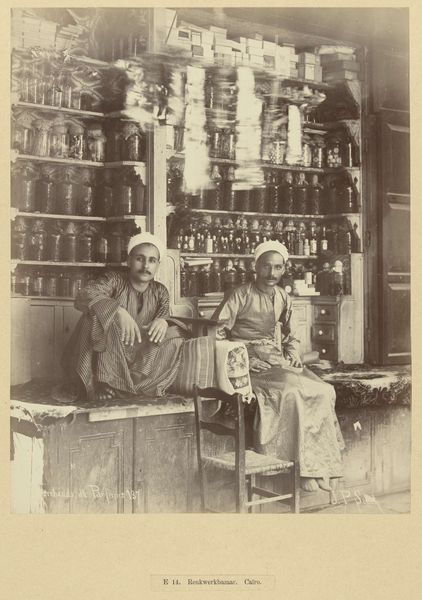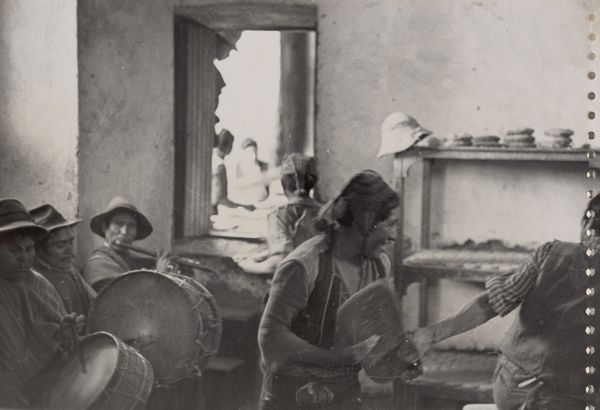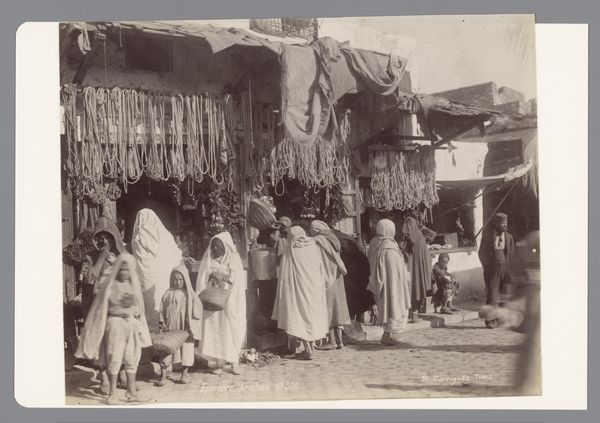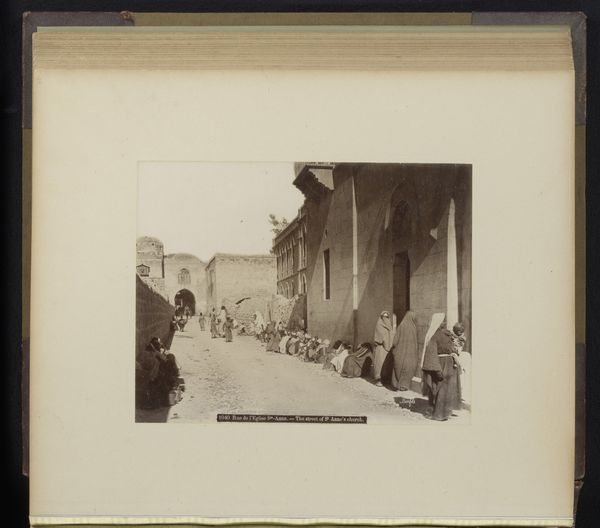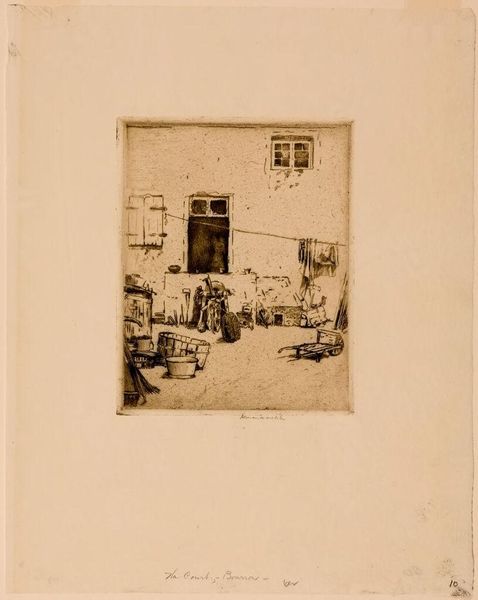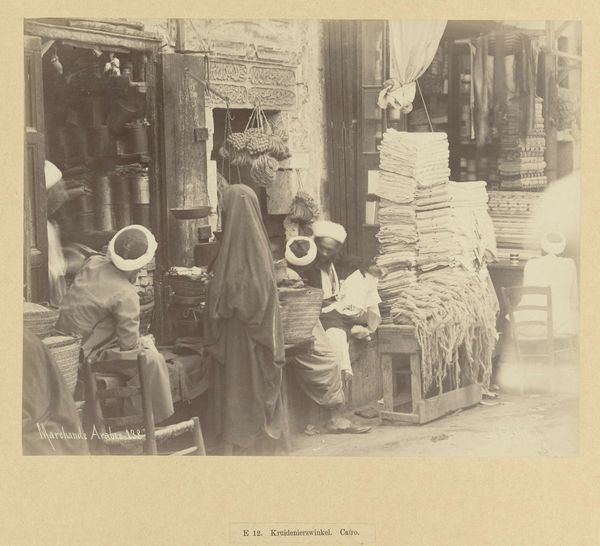
photography, albumen-print
#
photography
#
orientalism
#
cityscape
#
islamic-art
#
genre-painting
#
albumen-print
Dimensions: height 251 mm, width 195 mm
Copyright: Rijks Museum: Open Domain
Editor: This is an albumen print from sometime between 1880 and 1900 titled, "Klanten bij een winkel in de souk van Tunis," depicting shoppers at a shop in Tunis. It's fascinating how it captures a moment frozen in time. What strikes me most is the sense of everyday life juxtaposed against the backdrop of what feels like a very different culture from today. How do you interpret this work? Curator: This photograph offers a glimpse into the complexities of Orientalism. It's tempting to see it merely as a neutral record of a Tunisian market. But consider who is behind the camera and their intentions. Photography during this period often served colonial interests, creating images that reinforced Western ideas about the "Orient" as exotic or subservient. Editor: So, you're saying it's not just a snapshot of a market, but a product of a power dynamic? Curator: Precisely. The photographer, in choosing this particular scene and framing it in this way, is participating in the construction of a narrative. Who are the people depicted? How might their own voices be silenced or misrepresented by this image? Notice the focus on the veiled women – how might this play into existing stereotypes? Editor: That makes me think about the lack of agency they have in the photo, being observed. Curator: Exactly. The act of photographing itself can be seen as an act of appropriation. It's crucial to unpack the layers of representation and ask whose story is being told, and who is left out. What can photography do now, after understanding that? Editor: I hadn't considered the power dynamics at play. This has given me a completely different lens through which to view these kinds of photographs. Curator: Understanding the historical and social context is essential. Only then can we begin to critically engage with the complexities of representation and the legacies of colonialism in art.
Comments
No comments
Be the first to comment and join the conversation on the ultimate creative platform.
